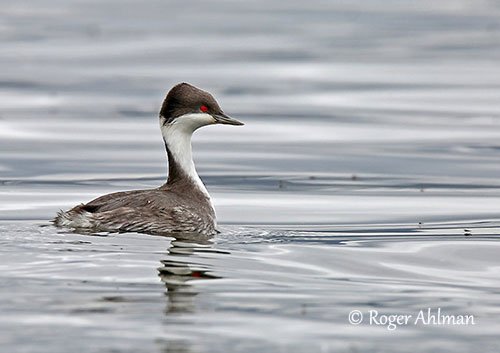
Fr: Grèbe de Taczanowski
Ang: Junin Grebe - Junin Flightless Grebe - Puna Grebe
All: Punataucher
Esp: Zampullín del Junín
Ita: Svasso del Junin
Nd: Punafuut
Sd: juníndopping
Photographers:
Roger Ahlman
Pbase Galleries Peru and Ecuador
Ken Havard
My Bird Gallery & Flickr gallery 1 & Flickr gallery 2
William Price
PBase-tereksandpiper & Flickr William Price
Text by Nicole Bouglouan
Sources:
HANDBOOK OF THE BIRDS OF THE WORLD vol 1 by Josep del Hoyo-Andrew Elliot-Jordi Sargatal - Lynx Edicions - ISBN: 8487334105
BIRDS OF PERU by Thomas S. Schulenberg, Douglas F. Stotz, Daniel F. Lane, John P. O’Neill, Theodore A. Parker III – Princeton University Press 2007– ISBN: 978-0-691-13023-1
Avian Report - The Ancient Lake Junín and its Endemic Grebe
Neotropical bird club - The extinction of the Junín Flightless Grebe?
All About Birds (Cornell Lab of Ornithology)
Neotropical Birds – Cornell Lab of Ornithology
Wikipedia, the free encyclopaedia
Junin Grebe
Podiceps taczanowskii
Podicipediformes Order – Podicipedidae Family
INTRODUCTION:
The Junin Grebe is endemic to Lake Junín in C Peru. It roosts and nests in reedbeds around the edges of the lake. It is an excellent diver and feeds on small fish and invertebrates. It is sedentary in this restricted range. This species is flightless.
The Junin Grebe is critically Endangered and confined to this lake. The population suffered considerable declines during the 20th century, and only 217 individuals were found in 2007.
Both scientific and French names of this species pay tribute to the Polish zoologist Wladyslaw Taczanowski.

DESCRIPTION OF THE BIRD:
Biometrics:
Length: 33-38 cm
The Junin Grebe in breeding plumage is slate grey with white lower face, throat, neck and breast. Rest of underparts is whitish with slate grey sides and flanks. On the underwing, the coverts are white whereas on the grey upperwing, the secondaries are mostly white.
On the head, top of head to below the eye is dark grey to blackish. We can see elongated feathers on the ear-coverts, mixed with some thin silvery plumes, forming a tuft hanging backwards to the uppermost side of the neck. The nape is dark grey to blackish, extending narrowly on upper central to rest of hindneck while becoming broader.
The bill is grey, with sometimes darker upper mandible and paler tip. The eyes are bright red with paler and yellower inner ring. Legs and lobbed feet are pale greenish-grey, or sometimes slightly orange-yellow.
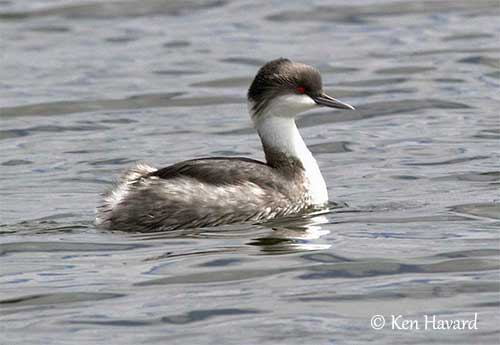
The Junin Grebe in non-breeding plumage is slightly paler. The elongated feathers are lacking on ear-coverts.
Male and female have similar plumage, but male is larger than female.
The juvenile resembles non-breeding adult, sometimes with a brownish wash.
RANGE:
The Junin Grebe is confined to Lake Junín in highlands of WC Peru. This lake covers about 140 km², with a depth of 5-10 metres. It is at 4,080 metres of elevation.
HABITAT:
The Junin Grebe spends its time on the open water of the lake where it forages. However, it goes to the shore for nesting in the extensive reed marshes bordering the lake.
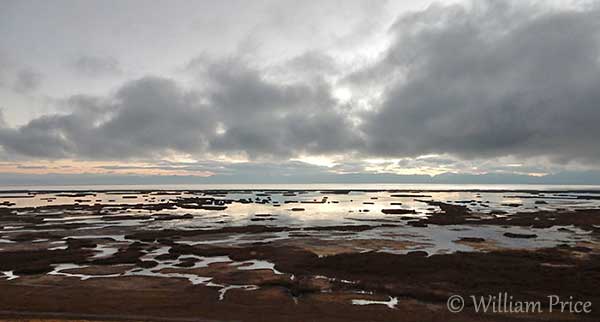
CALLS AND SONGS: SOUNDS BY XENO-CANTO
The Junin Grebe gives melodious whistles “doo-ith” or “wit”, and we can hear a short “trrr” in threat behaviour.
To attract a mate, it gives a longer “phooee-th” and a loud “dzi-dzee” is also given during the displays. A long “phuuuee” is used as advertising call.
BEHAVIOUR IN THE WILD:
The Junin Grebe feeds primarily on small fish of genus Orestias which is the main part of its diet (90%). But it also consumes aquatic bugs, midges of family Chironomidae, some amphipods and Ephydridae larvae and pupae.
However, these invertebrates are mainly eaten when small fish are not available, especially in January.
The Junin Grebe forages in open water, feeding and diving in small groups. They are excellent divers and pursue the prey underwater.
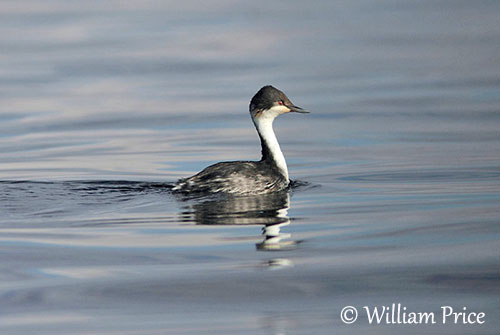
The Junin Grebe performs some courtship displays at the beginning of the breeding season. Two birds are facing each other, breast to breast, while turning their heads quickly from side to side. This display is named “head-shaking” and is usually accompanied by calls. This species nests among reeds on lake shores.
The Junin Grebe is sedentary.
It is flightless, unable to take off and maintain level flight. But it runs over the water while beating rapidly its small wings. It may cover long distances in this way.
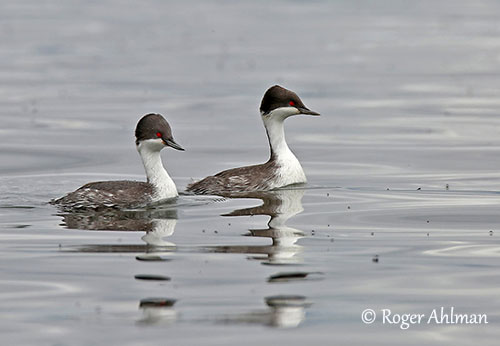
REPRODUCTION OF THIS SPECIES:
The breeding season takes place during rains, from late November to March, with peak in December-January.
The Junin Grebe nests in small colonies of up to 20 pairs, with nests 2-4 metres apart. It builds a platform in reedbeds, among tall Scirpus totora, on the shores of Lake Junín. The nest is attached to the reeds.
The clutch usually contains 2 eggs. Incubation and nesting periods are unknown. The chicks have grey down with pale stripes, while the underparts are whitish.
The breeding success depends on water level, and when the lake is particularly low, no chicks are raised.
PROTECTION / THREATS / STATUS:
The Junin Grebe is confined to Lake Junín. It is affected by pollution of water caused by mining activities, fluctuations of water level, both natural and human regulation causing nesting and foraging areas to dry out and involving nest failure. Climatic conditions linked to El Niño contribute to fluctuation of population, and extreme cold conditions involve the death of many individuals.
The surveys of 2001, 2002 and 2007 give an estimation of 217/304 individuals. The population is placed in the band 50/249 mature individuals and is continuing to decline.
The Junin Grebe is currently listed as Critically Endangered, although Lake Junín has been declared a national reserve, with regulation of hunting and fishing, but management of the water level is not currently well controlled.